Today, I’m rounding out the comprehension charts I’ve been sharing with a Nonfiction Text Structures Chart. You might also be interested in the Fiction Text Structure Chart and a Nonfiction Text Features Chart I’ve shared.
Read even more about nonfiction text structures.
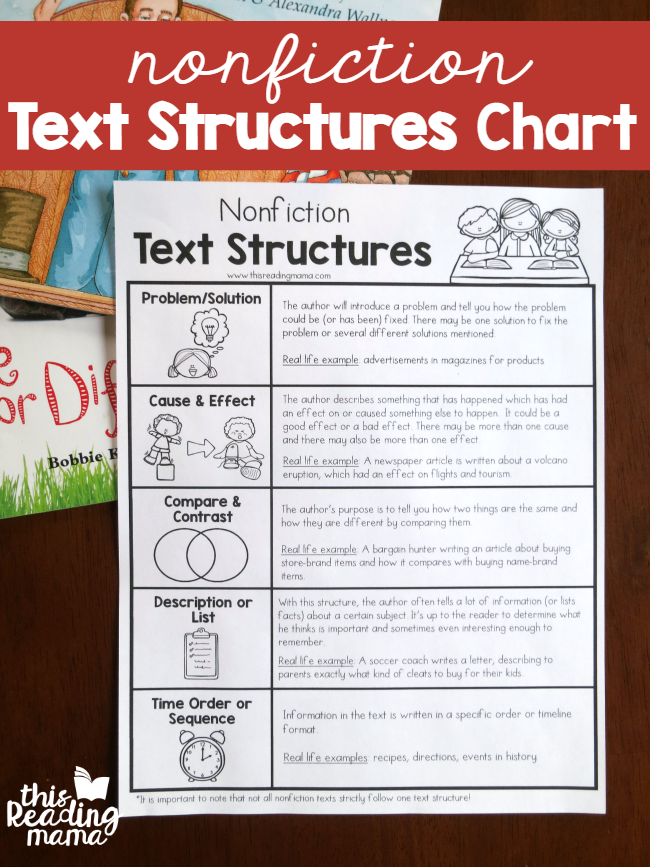
*This post contains affiliate links.
**The free printable can be found at the END of this post. Just click on the teal download button.
Nonfiction Text Structures
What are text structures?
Text structure is simply the words we use to tell how the author has organized the information in the book/text. Is the author comparing two or more things to one another? Or is the author telling about a problem with some solutions for solving it? The message the author is trying to give goes hand in hand with how they organize that info.
Why are text structures important for learners to know?
1. Readers can better prepare for what they will read if they know how the information will be organized.
When you open your recipe book, you expect your steps to be listed in some kind of order. If the steps are out of order, comprehension is compromised. When you pick up a book about a recent volcano explosion, you might expect that it will present some cause & effect information {or maybe even problem/solution}.
2. Readers can better retell or summarize the information they’ve read if they understand how it’s organized. For example, you wouldn’t tell a biography out of order.
3. Learners can organize their writing. Understanding text structure also helps our writers. Taking the information they want to share and coupling it with an appropriate text structure(s) makes it easier for writers to organize their writing.
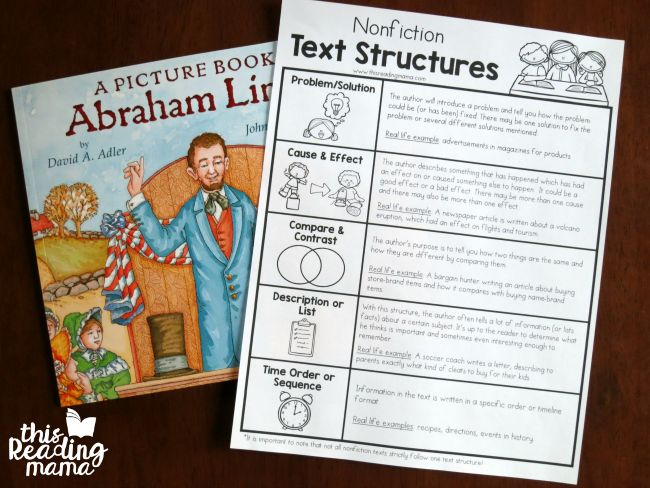
Nonfiction Text Structures Chart
This free chart lists the five most common nonfiction text structures. Often, a book isn’t just one kind of text structure. Books that list or describe about something often include sections of just problem/solution, cause & effect, a timeline, or compare & contrast.
But I recommend starting by teaching them one at a time. The book suggestions listed throughout this post may help.
1. Problem/Solution Structure – A problem and solution is presented. Readers may find there’s more than one problem or solution and it may even be mixed with some cause and effect, like Volcano! or Hand to Paw: Protecting Animals by Time for Kids.
2. Cause & Effect – Similar to problem and solution, the author presents how something is related or causes another thing to happen. There may be more than one cause or effect, too.
3. Compare & Contrast – Two or more things are compared to tell how they are alike and/or different. There are several of these books including Sharks and Dolphins by Kevin Kurtz, Crocodiles and Alligators by Seymour Simon, or Insect or Spider? {there are several books in this How do you Know? series including one for Salamanders/Lizards, Frog/Toad, and Moth/Butterfly}.
4. Description or List – With lots of details or facts listed about a certain subject, this one is probably the most common text structure. It’s loaded with information, which can be difficult to wade through at times. Examples might include authors/books like the True Books series, Gail Gibbons, Seymour Simon, Magic School Bus books, and Let’s Read and Find Out Science books.
5. Time Order or Sequence – These are books that have to be told in a certain order, like biographies or books that give directions.
*Just a note: Kindergartners and 1st graders aren’t too young to be introduced to nonfiction text structures! While you might want to teach a little more in-depth about them, just a simple mention like this, “Today, we’re going to read a book with a lot of information about dinosaurs. This kind of book is organized by listing facts that describe dinosaurs from long ago.”
Summarizing, Paraphrasing, and Retelling, by Emily Kissner, is a fantastic read and such a help if you want to learn more about text features or text structures.
You Might Also Like
Nonfiction Text Features Chart
Enjoy!
~Becky


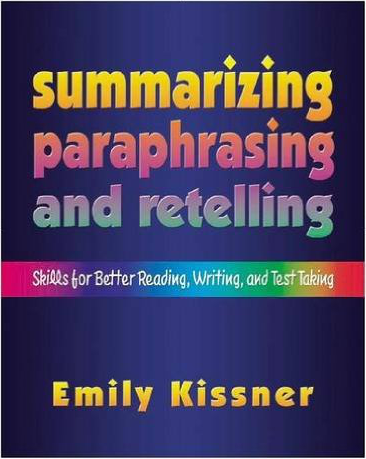
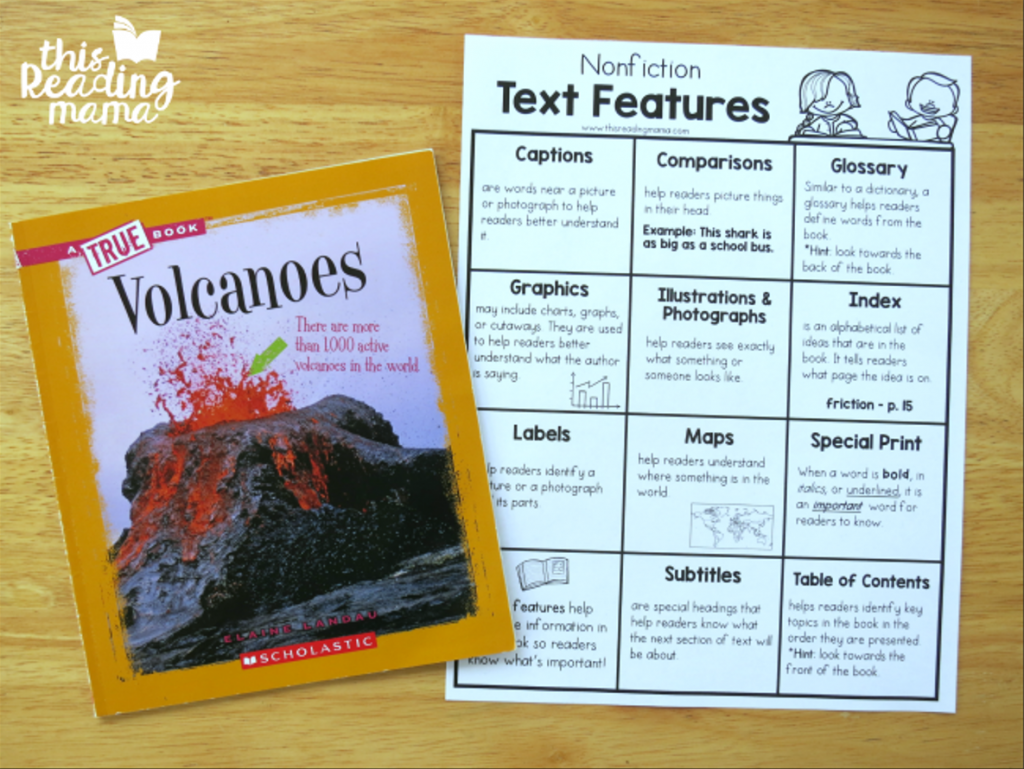

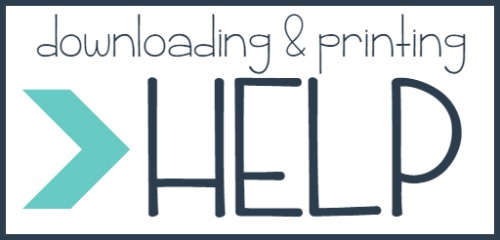
Great Non-Fiction Text Charts my little first graders will truly enjoy having this to use as a resource during reading time.
I love the freebie, but I wish it included a Q and A style of nonfiction writing. For example, “Do you know what happens to the water in a puddle when it dries up?”